[ad_1]
When it comes to summer, there’s a lot to love—the longer days, sun-drenched afternoons, and that easy, unhurried energy. But if you ask me, the true highlight of the season is the food. More specifically, summer season fruits and vegetables—the kind of vibrant, peak-flavor produce that instantly elevates every meal. From juicy peaches and cherry tomatoes to sweet corn and fragrant basil, this is the time to eat fresh, eat colorfully, and eat well.
Whether you’re browsing your local farmers market or eyeing new recipes to try, summer produce invites you to get creative in the kitchen. Ahead, we’re breaking down exactly what fruits and vegetables are in season in summer, plus tips for buying the best of the bunch and delicious ways to cook with them.

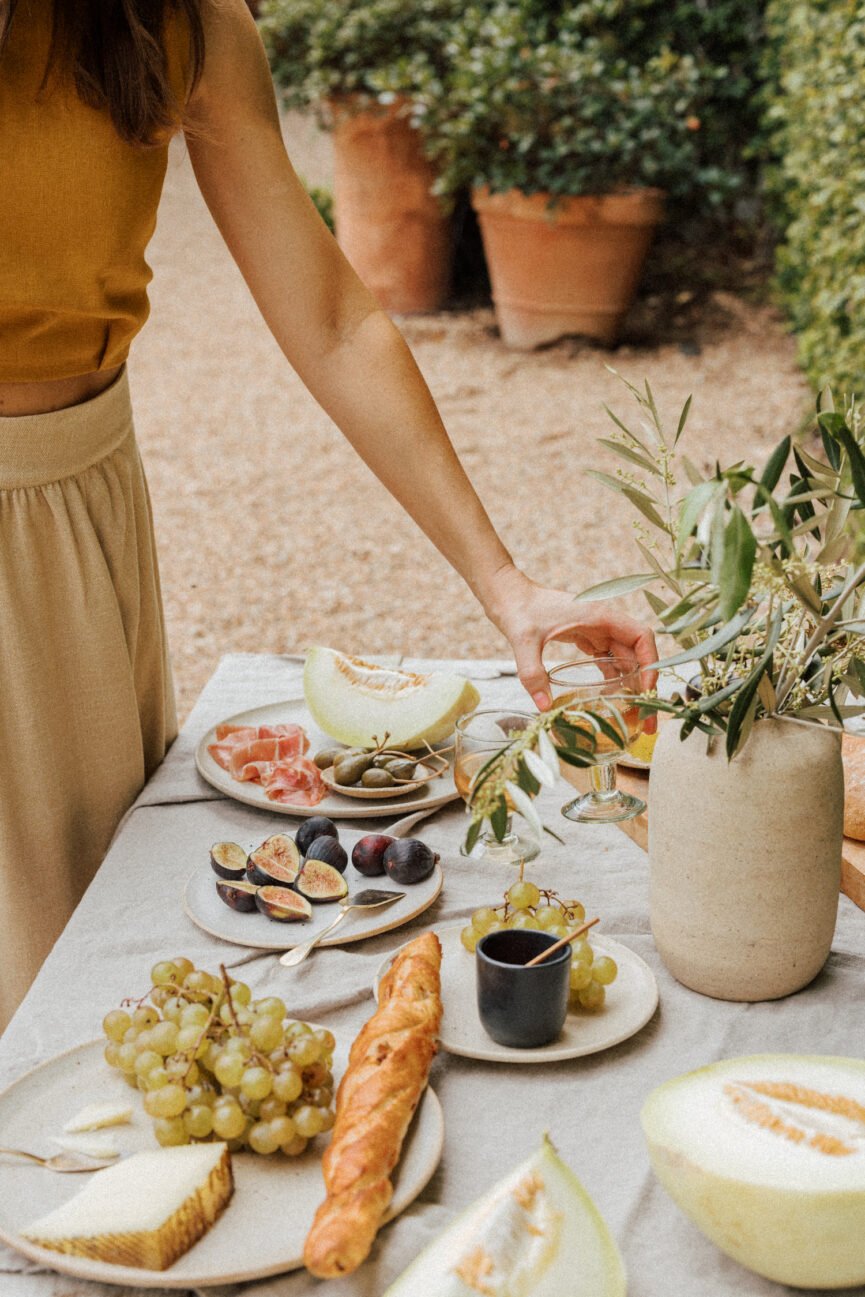
Eat the Rainbow
Summer produce is packed with antioxidants and phytochemicals. It’s colorful for a reason! Bright colors in natural foods (think tomatoes, carrots, leafy greens, etc.) contain polyphenols—powerful plant compounds that help prevent chronic disease. These nutrients are found in all kinds of fruits and veggies. And when you’re enjoying them in the summer, you’re reaping the benefits of peak flavor and nutrition.
In most cases, the deeper the color, the more nutritious the food. Blueberries help keep your mind sharp, and tomatoes are linked to a decrease in prostate cancer. Want to get the maximum disease-fighting power of these phytochemicals? Eat the rainbow—and know that summer produce makes it both easy and delicious.
What is seasonal eating?
Seasonal eating means consuming food at peak harvest. Said differently: It’s about choosing summer produce (or any seasonal produce) that’s naturally ripe, fresh, and at its most flavorful. For example, stone fruit shines from May through October—summer’s juiciest gems. Digging into a stone fruit salad with basil in June? That’s seasonal eating. Grow your own cucumbers? Et voilà—you’re eating with the seasons.
Why You Should Eat With the Seasons
Thanks to modern agriculture and technology, food is transported all over the world. That means many grocery stores carry the same fruits and vegetables year-round (looking at you, giant strawberries in December). While convenient, it can make it harder to know which ingredients are actually in season. A helpful resource? This Seasonal Food Guide outlines what fruits and veggies are harvested in each region of the U.S., month by month.
So why prioritize summer produce during the summer? Three major reasons:
1. More nutrition
Seasonal foods are often more nutritionally dense. One study found that broccoli grown in the fall (its true season) contained significantly more vitamin C than broccoli harvested in spring. That’s true across many fruits and veggies—nutrients are at their highest when nature says it’s time.
2. Better flavor
Nothing beats the taste of summer produce picked at its peak. Think ripe peaches that drip down your chin or tomatoes so sweet they barely need dressing.
3. Local, budget-friendly, and eco-conscious
Eating seasonally helps you support your local community. Many farmers markets and CSAs (community-supported agriculture) offer boxes of fruits, veggies, and even proteins harvested fresh and locally. “Locally grown” labels at grocery stores also give you a hint at what’s in season. And because seasonal produce is more abundant, it’s usually cheaper—plus it doesn’t travel as far, which is a win for the environment and your wallet.
Summer Season Fruits and Vegetables to Enjoy
Click on each ingredient below to go straight to that section:

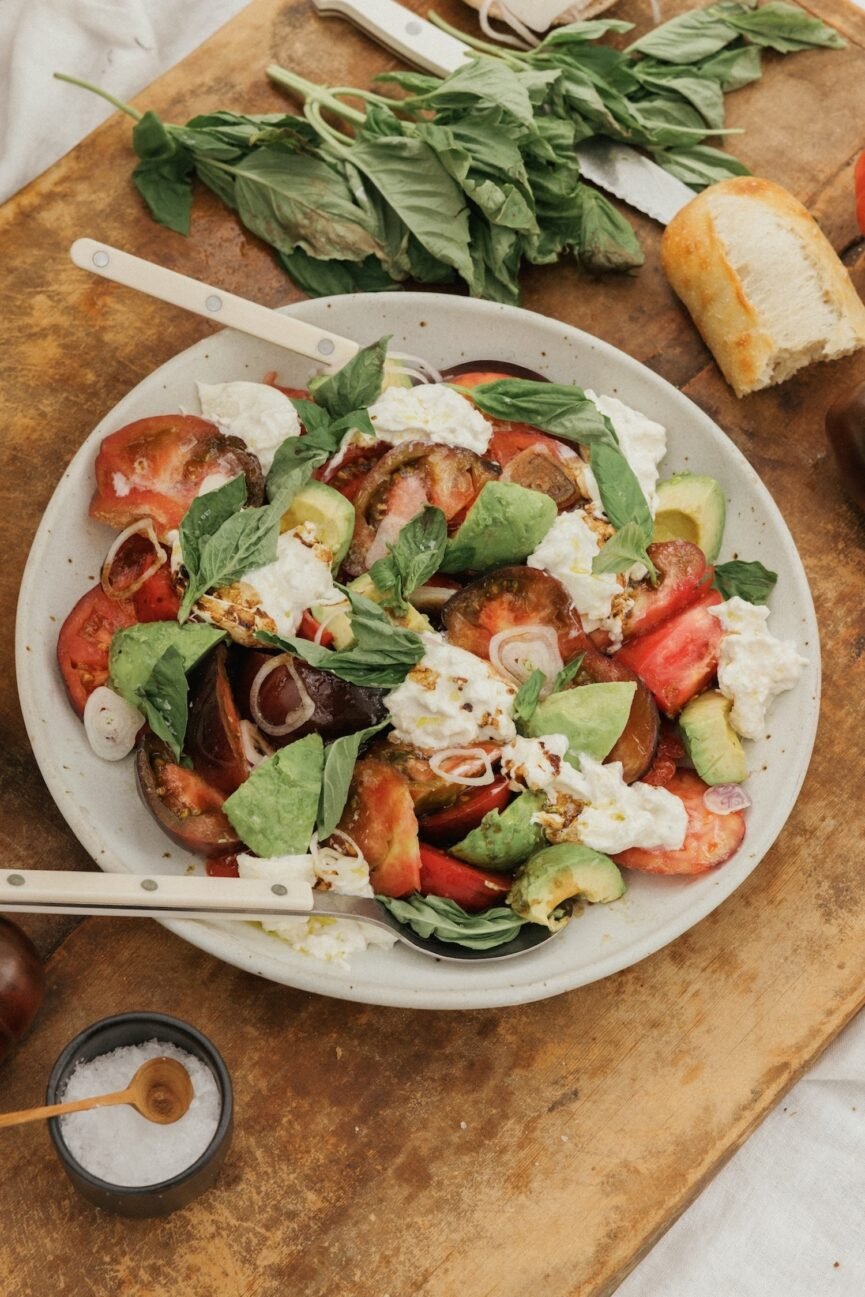
How to Buy Basil
There are a few different varieties of basil, but you want to choose a flagrant, voluptuous bunch with bright green, unbruised leaves. Sweet basil is most popular, but Thai basil is pungent and has purple hues. To keep basil fresh, prepare it like a flower bouquet.
What to Cook with Basil
Avocado Caprese Salad. This salad puts basil front and center—its peppery bite balancing the creaminess of avocado and richness of mozzarella. It’s bright, fresh, and just a little indulgent, making it the perfect no-fuss summer dish. Serve it on repeat all season long.


How to Buy Bell Peppers
When it comes to buying bell peppers, select firm, crisp bell peppers that feel dense. You want to avoid any that are shriveled or have soft spots. Depending on the recipe you’re making, size and shape matter. For example, choose round, block-shaped peppers if you’re making a stuffed peppers recipe.
What to Cook With Bell Peppers
Samosa Stuffed Bell Peppers. When bell peppers take center stage, you know you’re in for a treat. Plus, with a vitamin-packed vessel holding the dish together, you know you’re getting all the good stuff in one totally addicting package.


How to Buy Blueberries
Look for berries that are firm, dry, and smooth-skinned. Like bell peppers, you don’t want shriveled or soft spots. Although size isn’t an indicator of peak harvest, color is. Blueberries should be a deep purple-blue hue.
What to Cook With Blueberries
Blueberry Power Muffins. When blueberries burst into every bite, you know it’s going to be good. These (gluten-free, dairy-free) blueberry muffins are equal parts fluffy and jammy, with pecans and shredded coconut tossed in for added texture. It’s the kind of breakfast that disappears before the coffee’s even poured.

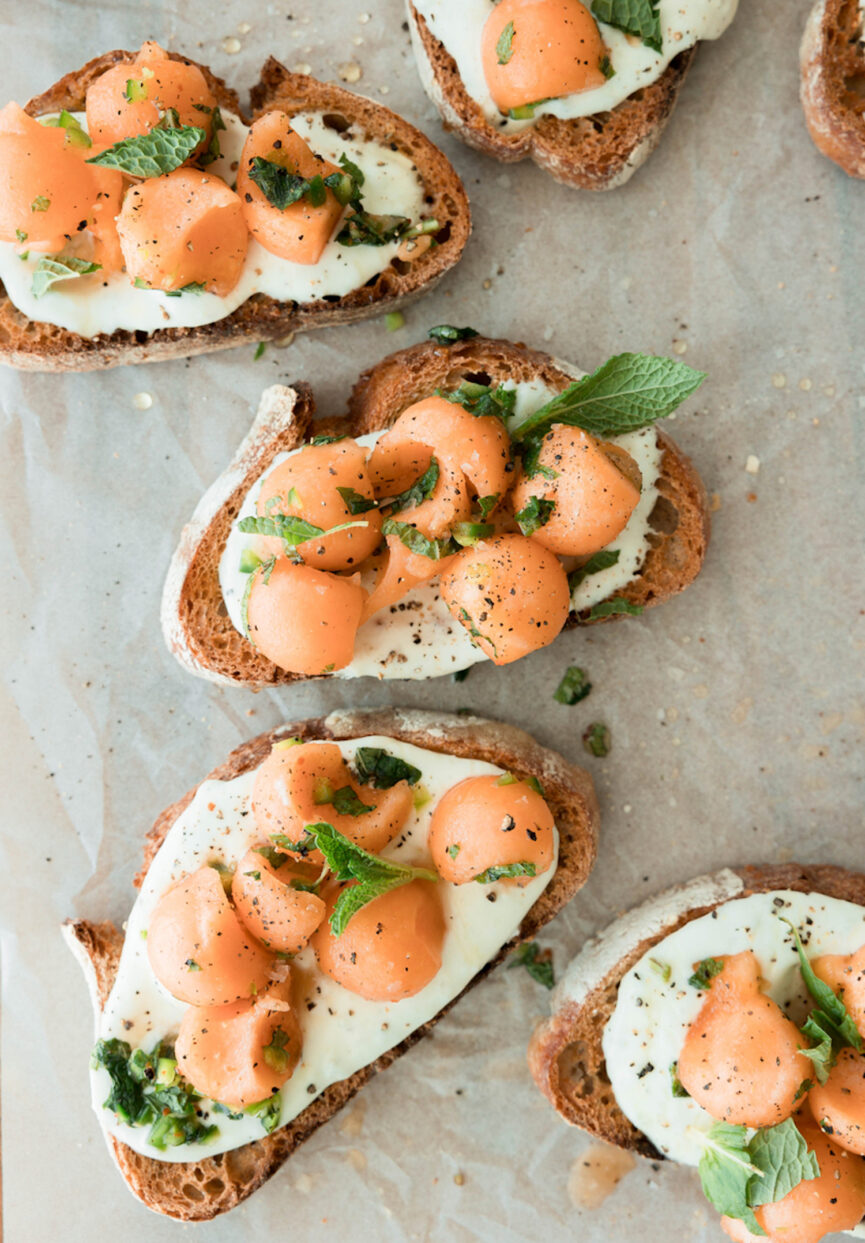
How to Buy Cantaloupe
Every wonder how to tell if a cantaloupe is fresh? Same—and I can guarantee we’re not alone. The best wait to pick a cantaloupe is by smell. It should have a sweet, slightly musky scent. A good cantaloupe also feels heavy for its size, along with a rind that resembles raised netting. When you press on the stem (or where the stem was removed), it should give slightly when pressed with your thumb.
What to Cook With Cantaloupe
Spicy Melon Ricotta Toast. This summery ricotta toast lets sweet, juicy cantaloupe steal the show. With creamy ricotta, jalapeño, and a drizzle of honey, every bite is equal parts fresh, flavorful, and crave-worthy.

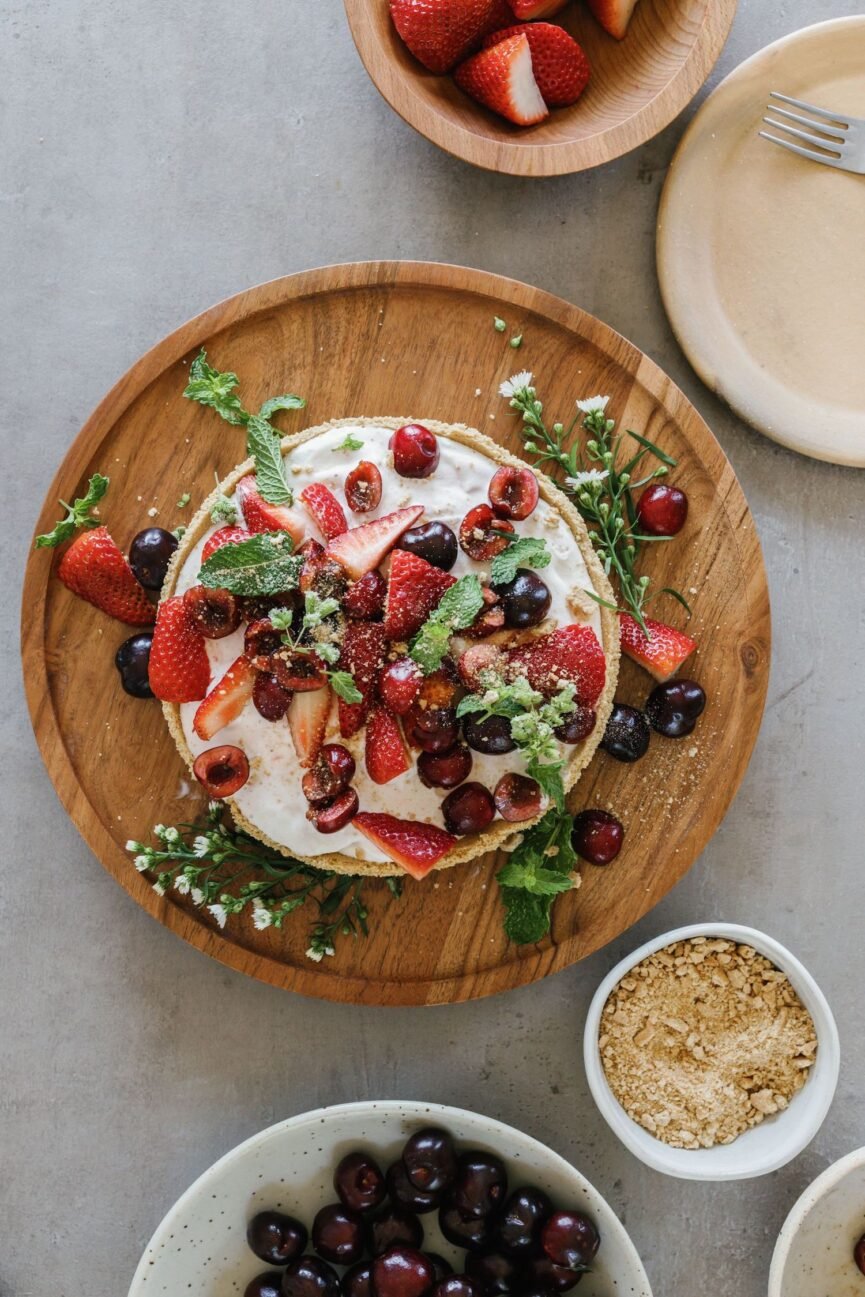
How to Buy Cherries
Cherries are truly nature’s candy. It’s impossible to eat just one. When buying cherries, I prefer grabbing a basket from the farmer’s market. Look for shiny skins with the stems still attached, and try to avoid any with brown spots. Most importantly, you want firm cherries as they will continue to ripen once you bring them home. Cherries perish quickly, so store them in the refrigerator.
What to Cook With Cherries
Cherry Berry Ice Cream Pie. You’re only five ingredients away from next-level deliciousness. This ice cream pie is summertime perfection, and it makes the most of this antioxidant-packed summer-season fruit.

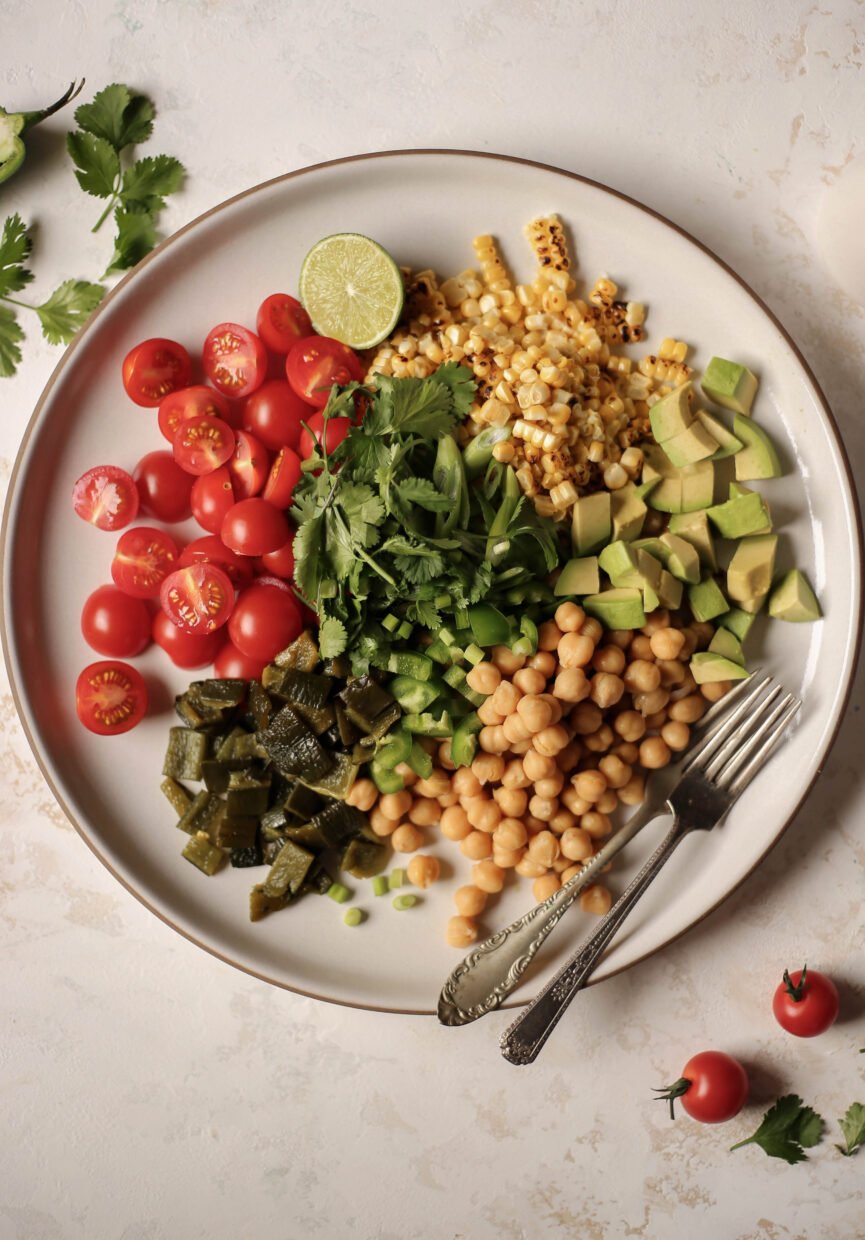
How to Buy Corn
Like cherries, my favorite way to buy corn is at the farmer’s market. If that isn’t an option, look for corn husks that are bright green, tightly wrapped against the corn. They should also be slightly damp. Make sure the husks aren’t starting to feel dry. Double-check for small brown holes, as those will indicate insects and should be avoided.
What to Cook With Corn
Roasted Corn, Chickpea, and Avocado Salad With Poblano Vinaigrette. This is the perfect summer get-together salad. It features all the good stuff—roasted poblano peppers, a good glug of fruity olive oil, and all the spicy, fresh herbs to give this salad all the summery vibes.

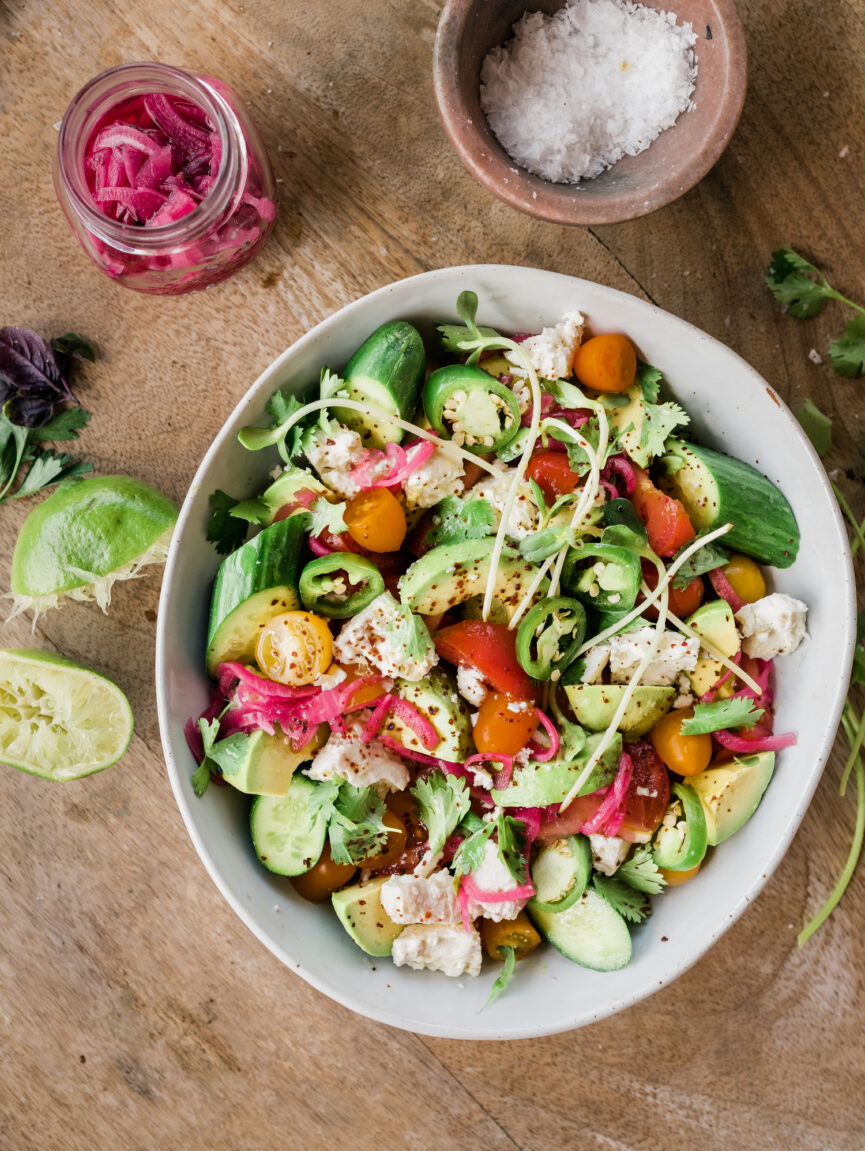
How to Buy Cucumbers
Look for firm cucumbers, without blemishes or soft spots (which can indicate that they’ve started to rot). Cucumbers should be dark green without any yellow spots.
What to Cook With Cucumbers
Tomato, Avocado, & Cucumber Salad With Feta. Once all of the ingredients are chopped, this recipe comes together in no time. We love the crunchy-creamy interplay of the cucumbers and avocado, plus there’s nothing better than taking a big bite of salty, briny feta. This salad has a light and fresh flavor that pairs well with just about any summer main. You’re also welcome to enjoy it on its own, too.


How to Buy Eggplant
Eggplants should have smooth, shiny skin, are uniform in color and feel heavy for their size. To test for ripeness, lightly press your finger against the eggplant’s skin. If it leaves an imprint, the eggplant is ripe. Smaller eggplants tend to be sweeter, less bitter, and have fewer seeds.
What to Cook With Eggplant
Ratatouille-Style Roasted Vegetable Pasta. This pasta lets eggplant take center stage—roasted until silky and rich, it gives the dish its signature depth. Tossed with al dente rigatoni and a medley of seasonal veggies, it’s the perfect one-pan meal for summer entertaining.
How to Buy Peaches
The best peaches have an even background color (golden-yellow or creamy-yellow), a well-defined crease, and are neither mushy nor too hard. In other words, avoid peaches that are green around the stem or have shriveled up. Also, pick them up and smell them. They should have a slightly sweet aroma and are round. A peach becomes round as it ripens.
What to Cook With Peaches
Honey-Grilled Peaches With Ice Cream. If you haven’t thrown peaches on the grill, you’re missing out. It’s truly game-changing. While any (and all) stone fruit works here, the combination of peaches and cream is equally delicious as it is nostalgic. This dessert is also perfect for friends with dietary restrictions—it’s naturally gluten-free and easily made vegan.

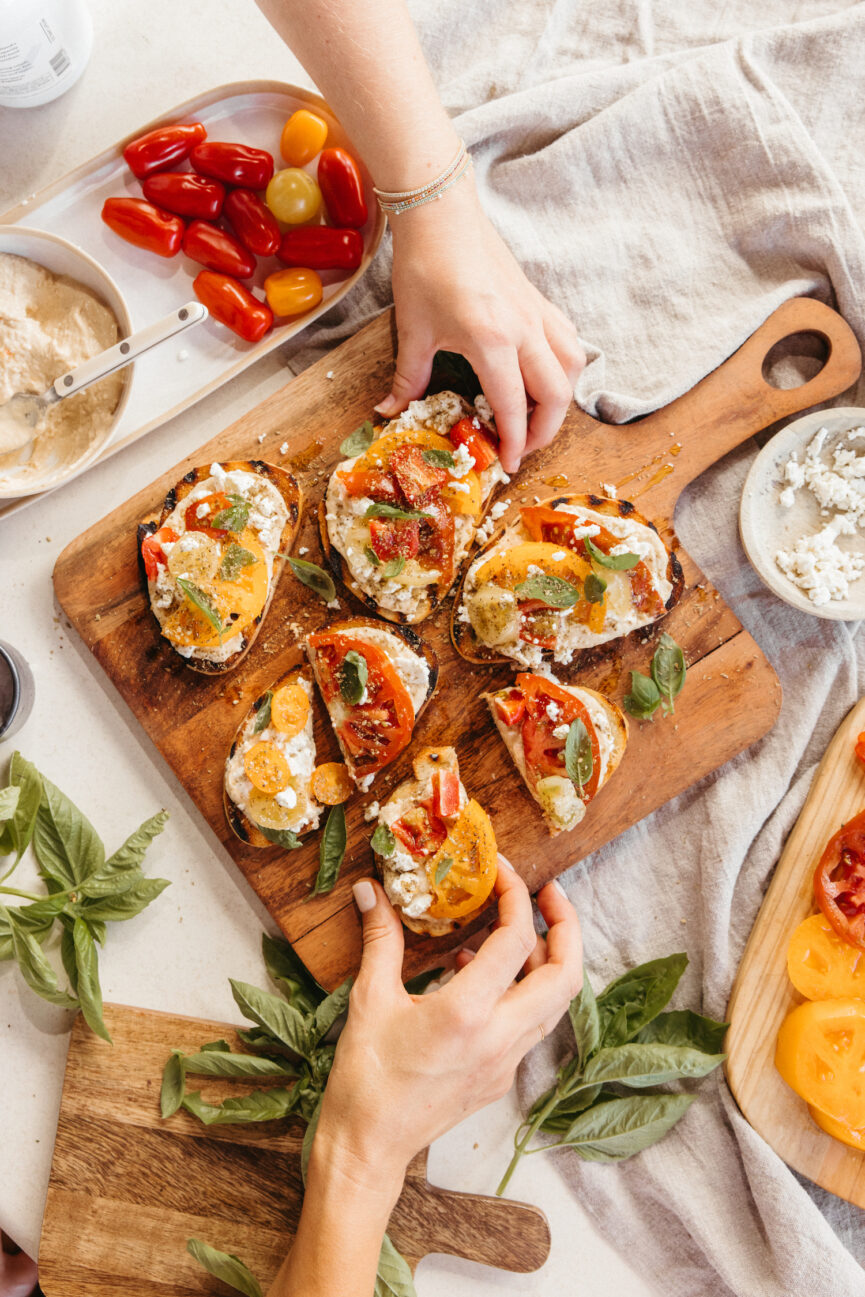
How to Buy Tomatoes
The difference between a winter and summer tomato is night and day. Nothing compares to a juicy, middle-of-July tomato. When buying tomatoes, look for bright colors and smooth skin. Avoid tomatoes with blemishes or dark spots. The tomato, like most produce, should have a good weight for its size. You want it to be firm yet soft and very aromatic (smell where the stem was attached).
What to Cook With Tomatoes
Hummus Toast With Tomatoes, Feta, and Za’atar. Vibrant summer snacking has eventually entered the chat. This recipe is a celebration of summer’s best tomatoes—heirloom, cherry, and grape varieties layered over creamy roasted garlic hummus. Expect brightness and balance in every bite, making this toast as beautiful as it is satisfying.

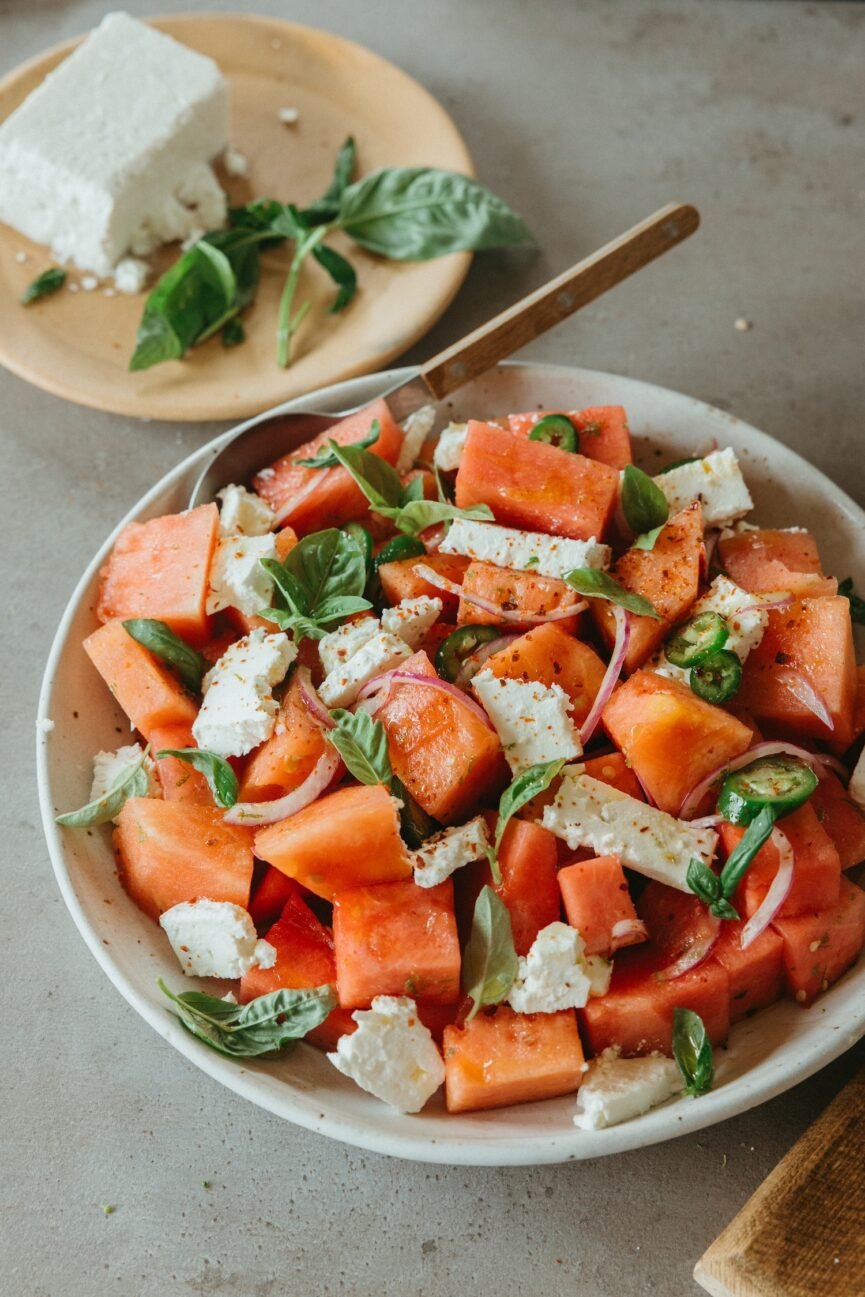
How to Buy Watermelon
Fear not: Buying a watermelon is easier than you think. First, look for the yellow spot. Watermelons develop a splotch where they rest on the ground. When this splotch is creamy yellow, it’s ripe. If possible, give it a good tap. Tap the underbelly of the watermelon. A ripe one will have a deep hollow sound, which means it is brimming with juice and at the peak of its ripeness.
What to Cook With Watermelon
Spicy Watermelon Feta Salad. This simple, refreshing watermelon salad recipe is the answer to hot summer days. With feta, jalapeño slices, and vibrant herbs, it’s the perfect mix of hot and refreshing. It takes minutes to throw together—try it once, and you’ll be making it all summer long.
This post was last updated on June 9, 2025 to include new insights.
[ad_2]
Source link

